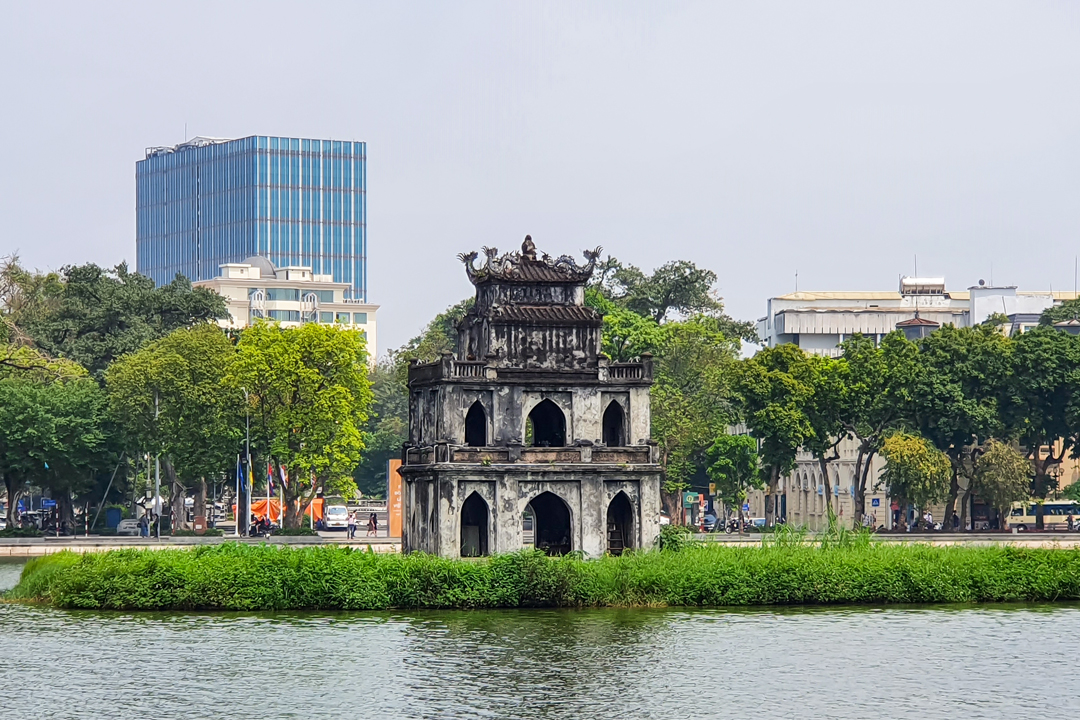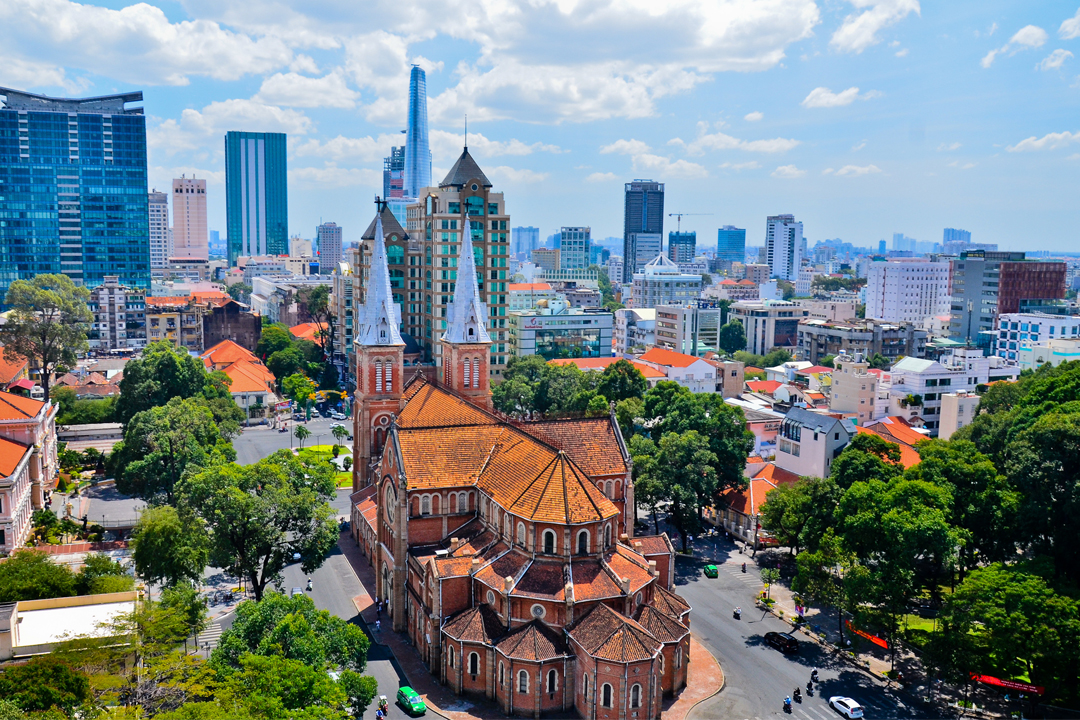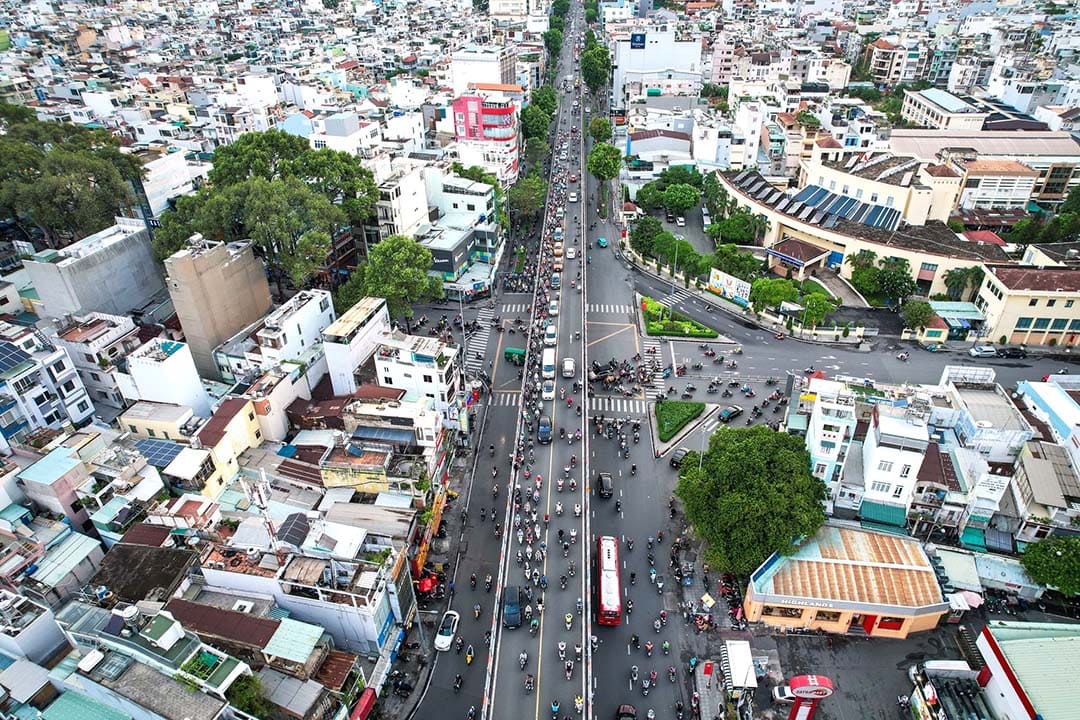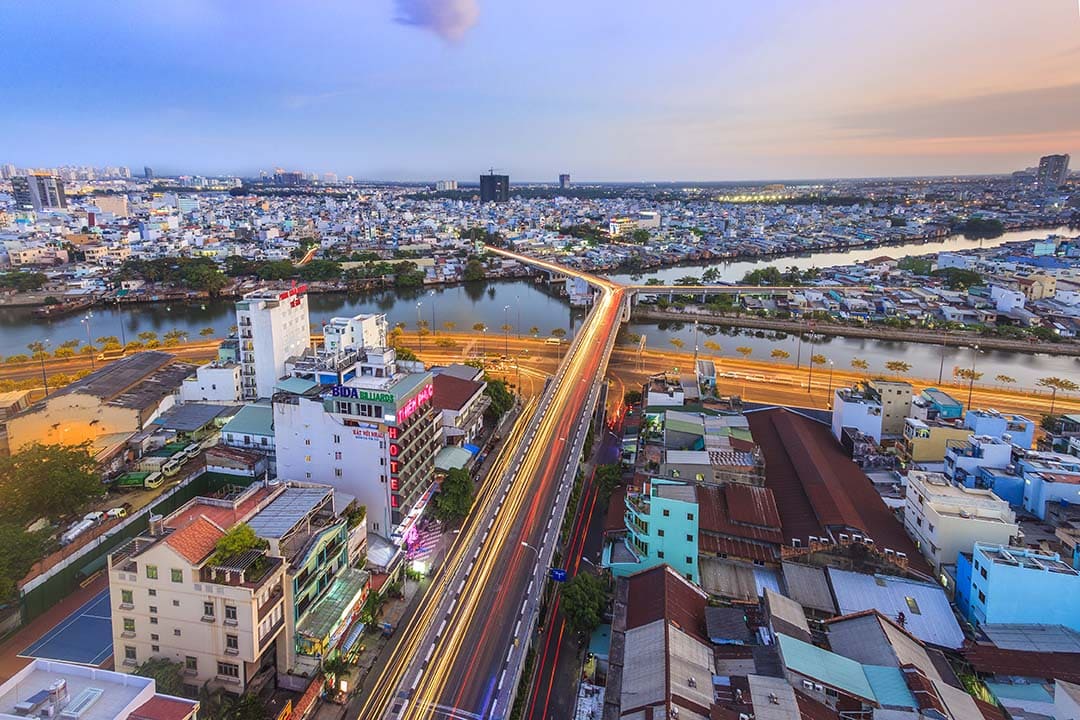Oct - 03 - 2025
Public transport in Hanoi offers a vibrant and affordable way to explore Vietnam's captivating capital. For a first-time visitor, the whirl of motorbikes and the maze of streets can seem daunting, but fear not. Hanoi's transportation network is more accessible than you think, blending traditional methods with modern efficiency. This guide will make sense of every option, be it the vast bus system, the modern metro, or the ease of taxis and ride-hailing apps. With this comprehensive GTrip, you’ll have the confidence to navigate the city's arteries like a seasoned local, unlocking every hidden gem and famous landmark on your itinerary.
Types of public transport in Hanoi
Hanoi’s public transportation system is a dynamic mix of old and new, reflecting the city's rapid development. While buses have long been the backbone of city transit, the recent introduction of the metro signals a move towards a more modern, integrated network. For tourists, this means more choices than ever for getting around Hanoi efficiently and affordably.
1. Bus, BRT - Popular public transport in Hanoi
Hanoi's public bus system is the most extensive and budget-friendly way to travel. With over 100 routes crisscrossing the city, buses can get you almost anywhere. The BRT (Bus Rapid Transit) is a specific, modern bus line that operates in a dedicated lane, offering a faster journey on its designated route. While buses offer incredible coverage, they can be slow during peak traffic and often get crowded. The typical cost for a single ticket is just 7,000 VND, making it the champion for budget-conscious travelers seeking an authentic local experience with public transport in Hanoi.
2. Metro
The Hanoi Metro is the newest and most modern addition to the city's public transport landscape. It's clean, fast, and completely immune to the capital's notorious traffic jams. The first operational line, Line 2A (Cat Linh - Ha Dong), is a 13-kilometer elevated railway connecting the Dong Da and Ha Dong areas. While its current reach is limited for tourists, it’s exceptionally convenient if your accommodation or destination, like the Temple of Literature (near Cat Linh Station), falls along its path. It represents the future of fast and efficient getting around Hanoi.
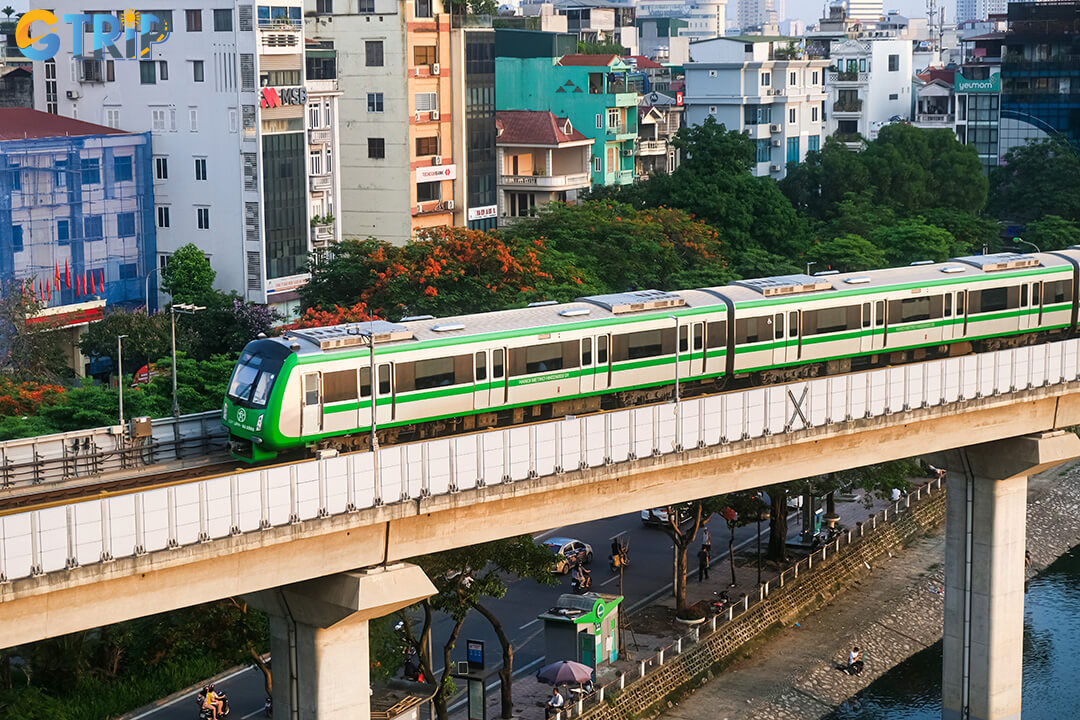
The Hanoi Metro offers a clean, modern, and traffic-free way to move quickly across the city
3. Fixed-route cars and taxis
For door-to-door convenience, nothing beats a taxi or a ride-hailing service. Traditional metered taxis from reputable companies like Mai Linh and Vinasun are readily available. However, the most popular and recommended option for tourists is using ride-hailing apps like Grab. These apps offer upfront pricing, eliminating guesswork and the risk of scams. This part of the public transport in Hanoi network is more costly but is incredibly convenient for groups, luggage, or late nights.
4. Train
It's crucial to understand that Hanoi's train system is not for intra-city travel but serves as a major hub for exploring other parts of Vietnam. From Hanoi Railway Station (Ga Ha Noi), you can embark on iconic journeys to mountainous Sapa, historic Ninh Binh, or coastal hubs like Da Nang and Hue. Traveling by train is a scenic and relaxing experience, offering a glimpse into Vietnam's stunning countryside. It's the perfect choice for longer, multi-day excursions originating from the capital, but not for getting from the Old Quarter to Hoan Kiem Lake.
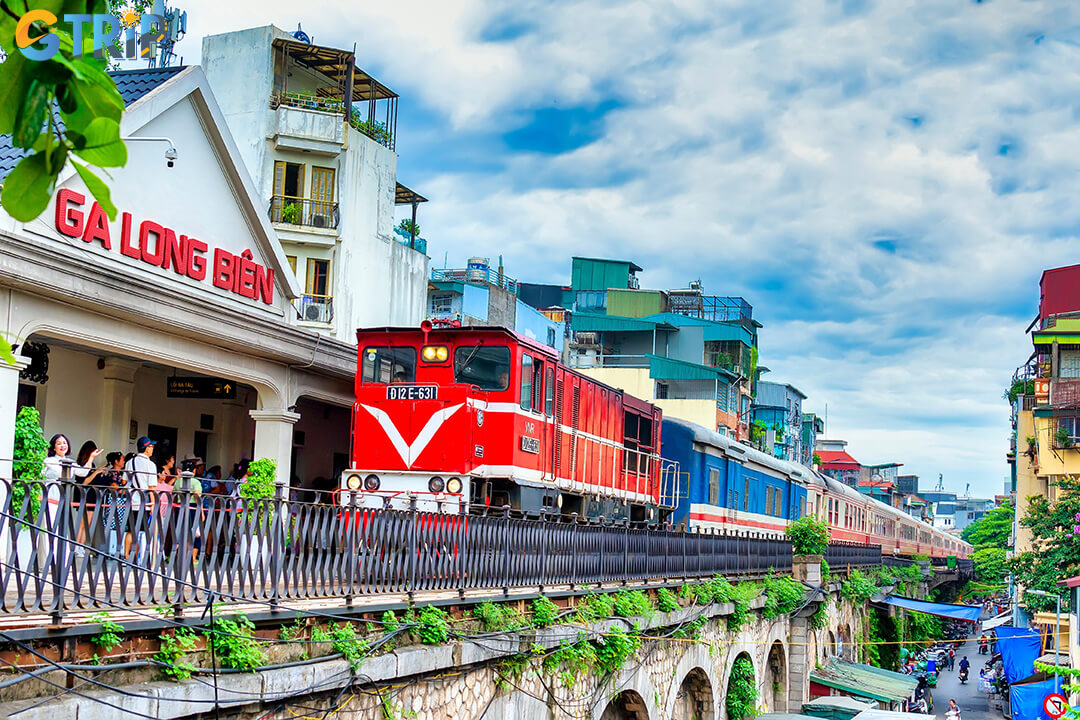
Hanoi’s train system is your gateway to scenic long-distance journeys across Vietnam, not for short trips within the city
5. Airplane
As the primary gateway to Northern Vietnam, Noi Bai International Airport (HAN) connects Hanoi with the rest of the country and the world. For tourists, air travel is the most efficient form of transportation for covering long distances within Vietnam. Frequent and affordable domestic flights connect Hanoi to major destinations like Ho Chi Minh City (Saigon), Da Nang, Phu Quoc, and Nha Trang. If your Vietnam itinerary involves exploring regions far from the capital, you will almost certainly be using the airplane as your mode of transport from Hanoi.
How to use public transport in Hanoi?
Navigating public transport in Hanoi is simple once you know the basics. Whether you’re buying tickets or using the right apps, here’s what you need to know for each option.
1. Use bus, BRT
Using the bus is a straightforward process. First, use Google Maps or the dedicated Tim Bus app to find your route and bus number. Once the bus arrives, board through the front or middle door. You don't need to buy a ticket beforehand, you can pay the conductor directly in cash. A ticket costs around 7,000 - 9,000 VND. Try to have small notes, as conductors may not have change for large bills. It’s polite to offer your seat to the elderly, children, or pregnant women. Press the stop button before you stop to signal the driver.
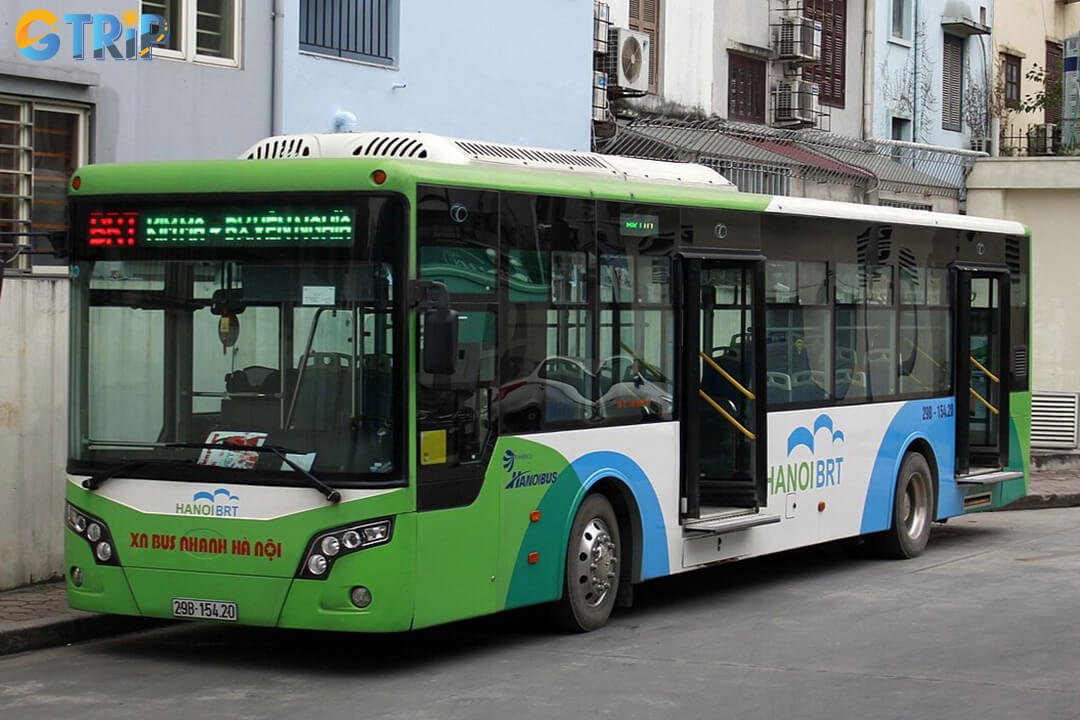
With simple boarding, cash payment, and wide coverage, buses are the most budget-friendly way to get around Hanoi
2. Use metro
The Hanoi Metro is designed for ease of use with clear, bilingual signage in Vietnamese and English. To ride, you can purchase a single-journey token from the automated vending machines at the station, which accept Vietnamese Dong cash. Select your destination station on the screen, and the machine will calculate the fare. Once you have your token, simply tap it on the reader at the gate to enter. When you reach your destination, insert the token into the slot at the exit gate to leave the station. It's a clean, simple, and efficient system.
3. Use fixed-route cars and taxis
The best way to use a taxi in Hanoi is by using a ride-hailing app. Download Grab or Xanh SM to your smartphone. These apps provide a fixed price before you book, track your driver's location, and handle payment securely, which helps avoid common taxi scams. If you must hail a traditional taxi from the street, choose a reputable brand like Mai Linh or Vinasun and insist the driver turn on the meter ("bat dong ho"). Payment is typically in cash, though app-based services can be linked to your credit card.
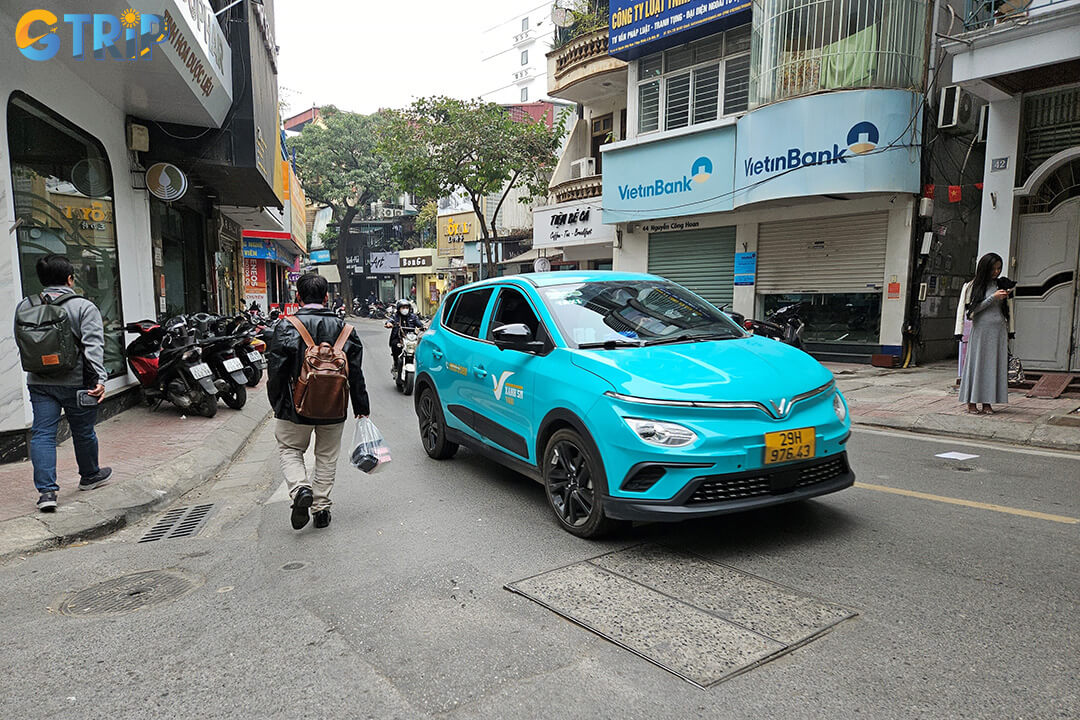
Ride-hailing apps make Hanoi taxis easy, secure, and scam-free, while reputable companies remain a backup on the street
4. Use train
For intercity train travel from Hanoi, it's best to book your tickets in advance, especially for popular routes like the overnight train to Sapa. You can purchase tickets at the Hanoi Railway Station located at 120 Le Duan Street, but the easiest method is booking online. You can use the official Vietnam Railways website (dsvn.vn) or trusted third-party platforms. You’ll have options for different classes, including hard seats, soft seats, and more comfortable sleeper berths for overnight journeys. Always have your passport or an ID copy when booking and boarding.
5. Use airplane
Booking domestic flights from Hanoi is simple via airline websites (Vietnam Airlines, VietJet Air) or online travel agents. To get from the city center to Noi Bai Airport (HAN), your best options are the Express Bus 86, which is cheap and reliable, or a taxi/ride-hailing apps for more convenience (around 45 - 60 minutes). For domestic flights, it’s recommended to arrive at the airport at least 90 minutes before departure to allow ample time for check-in and security, though 2 hours is safer during peak periods.
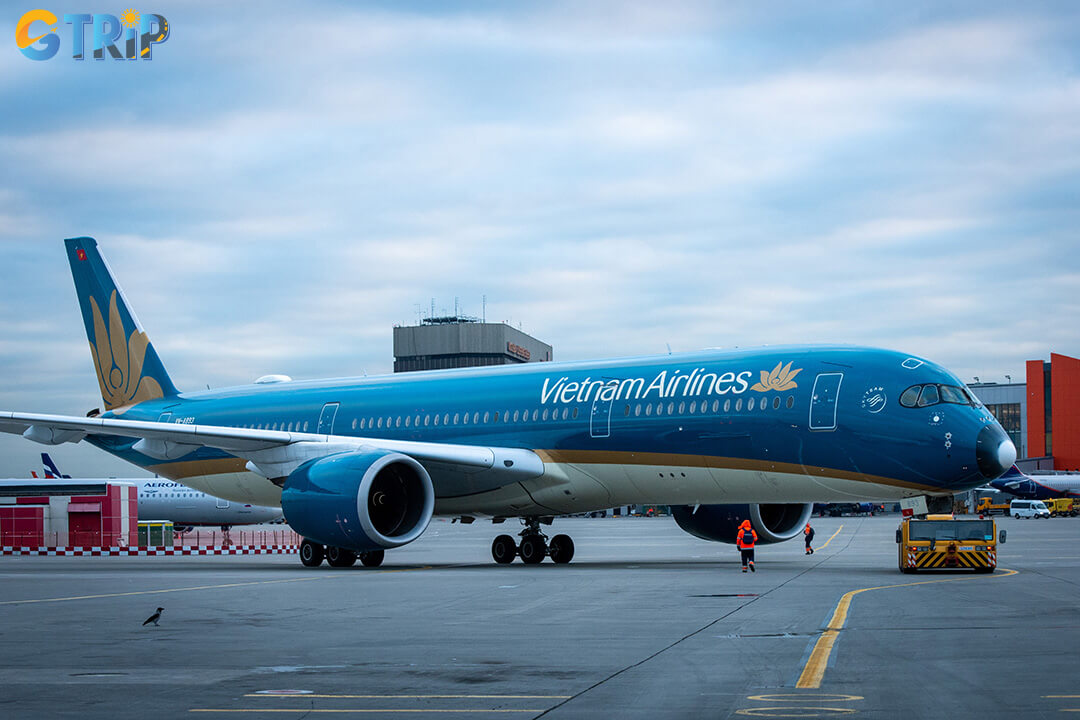
Simple to book and easy to reach, Hanoi’s domestic flights connect you nationwide via Noi Bai Airport
What's the best public transport for getting around Hanoi?
Choosing the best public transport in Hanoi depends entirely on your priorities: cost, speed, or convenience. There is no single "best" option, but this table breaks down the main choices to help you decide.
| Transport | Cost | Speed | Convenience |
|---|---|---|---|
| Bus / BRT | Very Low | Low, subject to traffic | Medium, wide coverage but can be confusing for new users |
| Metro | Low | High, avoids traffic | Medium, limited routes but highly efficient and clean |
| Taxi / Ride-hailing apps | High | Medium-High, direct route | Very High, door-to-door service and available 24/7 |
If you’re watching your budget and have time, buses are the cheapest and most widespread option. For fast, comfortable rides on set routes, the metro is hard to beat. And for direct, anytime travel, especially late at night or with luggage, Grab or taxis are the most convenient.
Essential tips for tourists
To make your journey even smoother, keep these essential tips in mind. A little preparation goes a long way in navigating Hanoi's public transport network confidently.
- Payment: Always carry small denominations of cash (Vietnamese Dong - VND). This is essential for paying for buses and many street-side taxis. While ride-hailing apps can be linked to your credit card, cash is king for most other situations.
- Must-have apps: Before you arrive, download these essential Hanoi travel apps. Google Maps is excellent for walking and finding bus routes. Grab/Be/XanhSM is non-negotiable for booking reliable car and motorbike taxis. The Tim Bus app is the official local tool for real-time bus tracking.
- Safety tips: Be aware of your surroundings, especially in crowded buses and stations, to avoid pickpockets. When crossing the street, walk at a slow, predictable pace and let the river of motorbikes flow around you.
- Common scams to avoid: The most common issue involves taxis overcharging. Using an app like Grab eliminates this risk by providing an upfront, fixed fare. If you take a street taxi, beware of drivers who "forget" to turn on the meter or claim it's broken.

With the right apps, small cash, and a few safety tips, navigating Hanoi’s transport network becomes smooth and stress-free
Read more:
Mastering public transport in Hanoi is a rewarding part of any trip to Vietnam's capital. The city caters to every traveler’s budget and style, with options ranging from affordable local buses and a modern metro to the convenience of ride-hailing apps. By embracing these systems, you can save money and gain a deeper, more authentic connection to the city's rhythm. Don’t be afraid to hop on a bus or try the metro, it’s all part of the adventure. And as you plan the rest of your incredible journey through Vietnam, remember that resources like GTrip are always here to help you navigate with confidence and ease.

